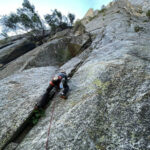Raven Rock Mountain, often shrouded in secrecy and known by a myriad of names, is home to a fascinating and critical facility: the Raven Rock Mountain Complex. This subterranean installation, also referred to as Site R, AJCC (Alternate Joint Communications Center), ANMCC (Alternate National Military Command Center), NMCC-R (National Military Command Center – Raven Rock), USAG-RR (U.S. Army Garrison – Raven Rock), and even playfully as the “Underground Pentagon,” “Little Pentagon,” or “Backup Pentagon,” holds a significant place in U.S. national security infrastructure. For those familiar with its origins, it’s also known as “Harry’s Hole,” a nod to President Truman’s initial approval.
The Genesis of Raven Rock Mountain Complex
The story of Raven Rock Mountain Complex began in the early years of the Cold War. In 1950, amidst growing global tensions, President Harry S. Truman recognized the need for a secure, off-site location to ensure the continuity of government in the event of a catastrophic attack on Washington D.C. He secretly authorized the construction of a deep underground facility within Raven Rock Mountain, designed to serve as a relocation site for the Pentagon.
The scale of the undertaking was immense. Over a period of just ten months, an astonishing half a million cubic yards of incredibly hard greenstone granite were excavated from the heart of Raven Rock Mountain, situated on the border between Pennsylvania and Maryland. Deep within this newly hollowed-out cavern, five separate three-story buildings were constructed.
These buildings, deceptively ordinary in appearance, resemble typical office structures, but are nestled within the protective embrace of solid rock. The underground complex is surprisingly expansive, featuring internal roads and parking areas large enough to accommodate substantial vehicles like trucks and buses. Raven Rock Mountain Complex is designed for complete self-sufficiency. It boasts two independent power plants for electricity generation, multiple underground reservoirs for water supply, and a sophisticated ventilation system to maintain a habitable environment. This robust infrastructure allows the facility to operate in a completely sealed “buttoned-up” state for at least 30 days, supporting up to 3,000 individuals during an emergency.
Beyond essential life support systems, this underground metropolis is equipped with a comprehensive range of amenities. These include a medical and dental clinic, a fire department, a post office, a dining facility, a snack bar, comfortable dormitories, a chapel, a barbershop, a fitness center, and even a bowling alley and a Starbucks, providing for the diverse needs of its potential inhabitants.
Raven Rock Mountain Complex in the 21st Century
Today, the Raven Rock Mountain Complex’s primary mission remains crucial to national security: supporting the Continuity of Operations Plan (COOP) for the Office of the Secretary of Defense and the Joint Staff. Site R is fully capable of functioning as a resilient backup to the Pentagon, equipped with cutting-edge technology, secure global network connections, and dedicated emergency operations centers. It provides secure relocation space for key components within the Department of Defense, as well as select other federal agencies, ensuring essential government functions can continue uninterrupted during a crisis.
The motto of Raven Rock Mountain Complex, “Ready Always Period,” reflects its constant state of preparedness. To maintain operational readiness, full-scale COOP exercises are conducted regularly. These exercises involve the overnight and multi-day relocation of hundreds of Department of Defense personnel to Site R. Senior leaders, often arriving by helicopter from the Pentagon, and specialized DOD emergency relocation teams participate in realistic scenarios. These drills rigorously test alert and notification procedures, reception, staging, onward movement, and integration (RSOI) protocols, COOP transportation plans, hasty access procedures to Site R, and the seamless integration of mission-critical functions within the alternate site’s operational routine.
In addition to its COOP role, Raven Rock Mountain Complex serves as a vital communications hub. It supports a wide range of Department of Defense users, DOD Nuclear Command Control and Communications (NC3) organizations, intelligence operations, and acts as the Department of Defense’s national gateway to non-DOD users and U.S. allies. The diverse array of communications and defense systems housed at Site R makes it an invaluable national training center for Department of Defense support personnel. Currently, Raven Rock Mountain Complex is undergoing a significant expansion project to enhance its power generation capacity and double its overall support capabilities, ensuring its ability to meet future mission demands well into the 21st century.
Exploring Raven Rock Mountain Online
While physical tours of Raven Rock Mountain Complex are not available to the public, you can explore the area online through Google Maps Street View. This allows a virtual glimpse of the exterior and surrounding landscape of this intriguing location.
Relocating to Raven Rock Mountain: Hasty Access Procedures
In the event of an actual relocation or a COOP exercise, “Hasty Access” procedures are employed to expedite the arrival of essential personnel. Individuals arriving by helicopter follow specific protocols known as “Blue Light” and “Iron Gate” procedures. Detailed entry procedures for all personnel, contractors, and guests are meticulously outlined in USAG Raven Rock Regulation 380-1.
Raven Rock Mountain Complex Photo Gallery: A Glimpse Inside
Explore the construction and inner workings of Raven Rock Mountain Complex through this curated photo gallery:
-
“Building A” being constructed inside the Raven Rock tunnel
-
1951 photo of Site R under construction
-
1952 photo of the Site R entrance
-
Tunnel roads designed to accommodate large trucks
-
Buildings constructed separate from the granite cavern walls
-
Each building rests independently on large springs for shock absorption
-
Massive bolts reinforce the exposed rock throughout the facility
-
Continuous inspection and maintenance of the tunnel walls
-
Electric vehicles utilized for internal transport within Site R
-
Main interior personnel entrance and security checkpoint
Disclaimer: Please be aware that this website is a parody and presents fictional content and imagery. It is not affiliated with or endorsed by any U.S. Government agency, including the Raven Rock Mountain Complex (if such a place truly exists…). Unfortunately, public tours are not available.
